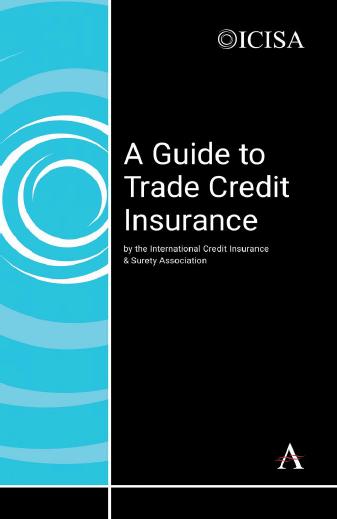
4 minute read
The Lost Art of Character Underwriting
Robert Murray, Global Head of Surety at Zurich
In the early days of any credit career, underwriters learn a version of the “Three C” model of risk assessment. Prior to taking on any real account responsibilities, some of us speculated that the model was defined as Coffee and Croissants with Colleagues but soon discovered that the three Cs we were learning to evaluate were Capital, Capacity and Character.
Advertisement
The definitions of Capacity, Capital and Character vary across branches of the credit world. Within the world of Surety, Capacity refers to a counterparty’s ability to execute a portfolio of obligations, Capital refers to the counterparty’s resources to handle the obligations, and Character addresses the counterparty’s likelihood of choosing to honor obligations in good times and bad. It is this third “C” that has often been neglected in recent years.
The reduced level of focus on character assessment has resulted in part from improved analytics associated with financial analysis techniques. Much is written about the great value that can be gained through the use of statistical predictive analytics when assessing credit risk. These analytical models are indeed valuable as they improve an underwriter’s ability to identify financial parameters that are closely linked to counterparty solvency. While the models clearly contribute to sound underwriting decisions, the perception of precision in the analyzed data combined with an extended period of benign surety loss activity has had the unintended consequence of reducing the value placed on counterparty character assessment relative to other categories of analysis.
As noted above, we have been fortunate that the Surety business globally has enjoyed a long period of relatively low losses. While the losses have been infrequent, the losses incurred generally have had a direct link to challenges with a counterparty’s character. These challenges can be seen in a range of forms including issues with financial reporting integrity, inappropriate transactions with trading partners or various other indiscretions that reflect an unwillingness to honor obligations, and ultimately, demonstrate a lack of character.
Across credit granting organizations, most files will contain a reference to a counterparty’s management team. More often than not, an underwriter will declare that the management team is “outstanding” and that a “strong relationship” exists. Fortunately this is true in many cases, however, from a simple statistical perspective we must recognize the fact that on average, most management teams and relationships are average. The challenge for us all is to identify in advance the accounts that will ultimately demonstrate issues of character.
The task of evaluating character is made difficult by the absence of empirical data to yield a quantified measure. Personal credit scores are an indicator but fall short in telling the full story. In time perhaps there will be predictive analytic techniques to rely upon but a good first step, or reinforcing step, is to ensure that underwriters form a clear opinion on the character aspect of an account risk. If, as described above, all accounts are assessed as having outstanding management teams of tremendous character then your portfolio of accounts is clearly out of the ordinary!
A respected colleague of mine often says that character is the only “C” that might be available when an account is experiencing difficulties. It follows that strong character will significantly improve the probability of a troubled account recovering from its challenges and in turn keep the surety provider in a favorable position. A robust and honest assessment of counterparty character is a step in the right direction in ensuring that a risk portfolio will remain strong.
A Guide to Trade Credit Insurance
A practical and accessable industry-wide reference on Trade Credit Insurance, written by a team of industry experts.
This compact volume is a practical guide for anyone interested in Trade Credit Insurance. The International Credit Insurance & Surety Association (ICISA) presents an approachable but detailed guide written collaboratively by carefully selected industry experts. The guide describes the ‘lifeline’ of the credit insurance product, from the initial application stage to the expiration phase of the policy, including practical use aspects for credit managers. The volume offers compact information on the history of trade, the need for protection against trade credit risks, and solutions offered by credit insurance providers. The focus is on short term credit, including whole turnover policies and single risk policies.
Readership
Suitable for anyone interested in Trade Credit Insurance, from credit managers to policymakers.
Contents
Foreword; Introduction; Disclaimer; 1. What is trade?; 2. What is trade credit insurance?; 3. Product types; 4. Risk types; 5. Typical set-up of a trade credit insurance contract; 6. Premium, the price for cover; 7. Day-to-day policy management; 8. Buyer risk underwriting in trade credit insurance; 9. Debt collection; 10. Imminent loss and indemnification; 11. Renewal, expiry, termination of a policy; 12. Single risk business; 13. The single risk insurance market: Private and public players; 14. Reinsurance of Trade Credit Insurance; Trade Credit Insurance resources; Glossary of trade credit terminology

Key selling points
• Collaboration of a diverse group of experts from top organizations around the world • Written in an approachable style, accessible to the non-specialist • Includes extended glossary of key terminology • Includes a list of relevant resources for further reading
About the Author(s) / Editor(s)
The International Credit Insurance & Surety Association (ICISA) brings together the world’s leading companies providing trade credit insurance and surety bonds. ICISA promotes technical excellence, industry innovation and product integrity, as well as addressing business challenges generated by new legislation.
Where to order my copy
To order a copy of the book ‘A Guide to Trade Credit Insurance’, please visit www.amazon.com.





